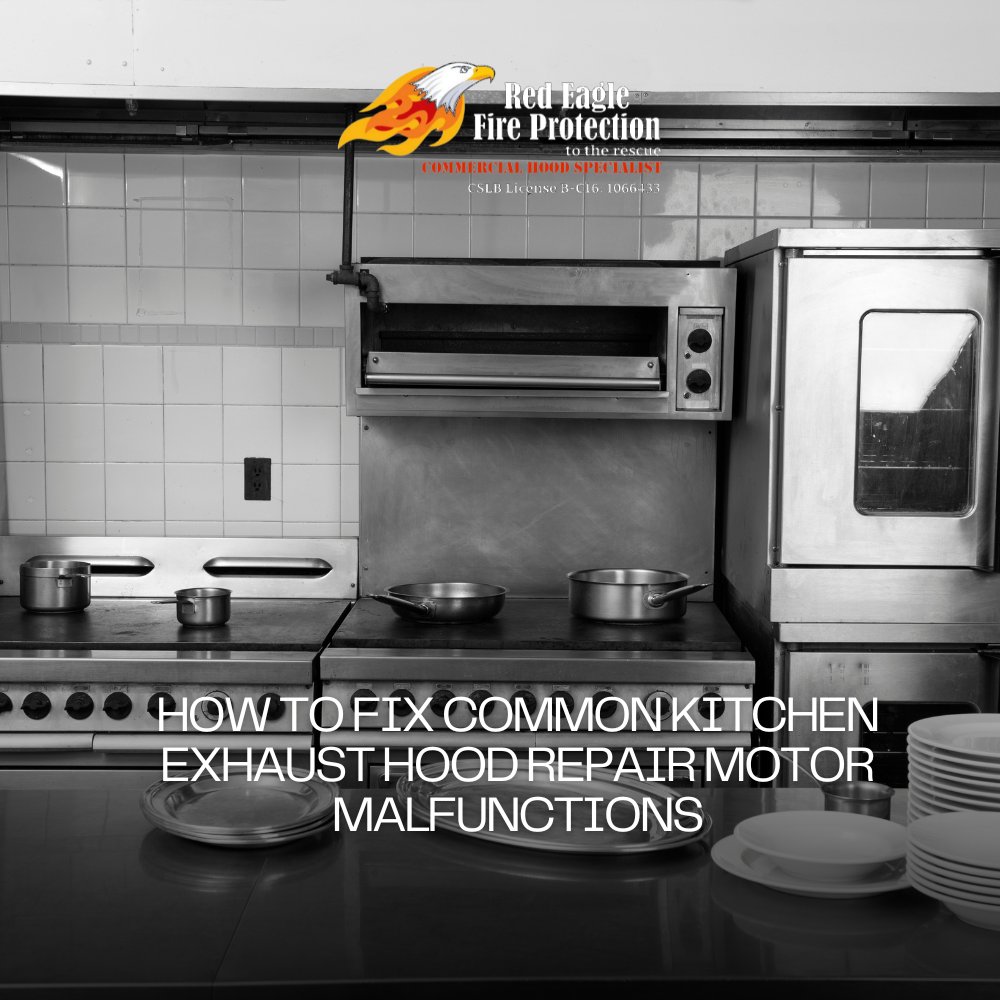How to Fix Common Kitchen Exhaust Hood Repair Motor Malfunctions
Maintaining a functional kitchen exhaust hood is crucial for ensuring proper ventilation, safety, and cleanliness in your kitchen. One of the most critical components of this system is the motor, which drives the fan to remove smoke, odors, and grease-laden air. When the motor malfunctions, it can disrupt the entire exhaust system. Here, we provide a comprehensive guide on how to identify and fix common kitchen exhaust hood repair motor malfunctions.
Identifying Motor Malfunctions
Before attempting any repairs, it’s important to accurately identify the issue with the motor. Common signs of motor malfunctions include:
- Unusual Noises: Grinding, humming, or squealing sounds can indicate motor issues.
- Reduced Airflow: If the exhaust hood is not effectively removing smoke and odors, the motor might be failing.
- Motor Not Running: If the motor does not start at all, there could be an electrical or mechanical problem.
- Overheating: A motor that gets excessively hot may have internal issues or be overworked due to other problems in the system.
Steps to Fix Common Motor Malfunctions
1. Safety First Before starting any repair work, ensure that the power to the kitchen exhaust hood is turned off. This prevents any electrical accidents and ensures your safety during the repair process.
2. Inspect and Clean the Motor Grease and dirt buildup can cause the motor to overheat or run inefficiently. To clean the motor:
- Remove the motor cover and use a soft brush or cloth to wipe away any grease and debris.
- Check the motor vents and ensure they are clear of obstructions.
- For thorough cleaning, use a degreasing agent suitable for electrical components, but be careful to avoid getting liquid inside the motor housing.
3. Check Electrical Connections Loose or damaged electrical connections can prevent the motor from running properly. Inspect all wiring connections:
- Ensure that all connectors are tight and secure.
- Look for any signs of damaged or frayed wires and replace them if necessary.
- Use a multimeter to test for continuity and confirm that power is reaching the motor.
4. Lubricate Moving Parts Lack of lubrication can cause the motor to overheat or make unusual noises. Apply a few drops of motor oil to the motor bearings and any other moving parts. This reduces friction and helps the motor run smoothly.
5. Replace Faulty Capacitors A common issue with motors is a faulty capacitor, which can prevent the motor from starting or running efficiently. To replace a capacitor:
- Locate the capacitor (usually a small cylindrical component connected to the motor).
- Discharge the capacitor by shorting its terminals with an insulated screwdriver.
- Disconnect the capacitor and replace it with a new one of the same rating.
- Reconnect the wires and secure the new capacitor in place.
6. Test the Motor Windings If the motor still does not function properly, the windings might be damaged. Use a multimeter to test the resistance of the motor windings:
- Set the multimeter to the ohms setting and measure the resistance between the motor terminals.
- Compare the readings to the manufacturer’s specifications. If the readings are significantly different, the motor windings may be damaged, and the motor might need to be replaced.
7. Consider Professional Repair or Replacement If the above steps do not resolve the issue, it may be necessary to call a professional technician. Complex motor problems, such as burned-out windings or severe mechanical damage, often require professional expertise. In some cases, replacing the motor may be more cost-effective than repairing it.
Preventive Maintenance Tips
To avoid future motor malfunctions, implement these preventive maintenance practices:
- Regular Cleaning: Keep the motor and surrounding areas clean to prevent grease buildup.
- Routine Inspections: Regularly check the motor and its components for signs of wear or damage.
- Proper Ventilation: Ensure that the exhaust system is not obstructed and that the motor has adequate airflow to prevent overheating.
- Scheduled Maintenance: Follow a maintenance schedule that includes professional inspections and servicing as recommended by the manufacturer.
Maintaining a functional kitchen exhaust hood repair motor is essential for a safe and efficient kitchen environment. By following these steps and incorporating regular maintenance practices, you can minimize downtime and ensure that your kitchen exhaust system operates smoothly.

